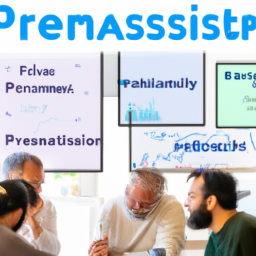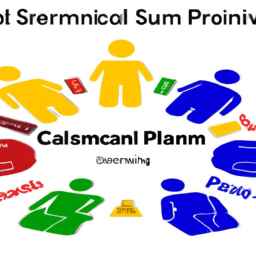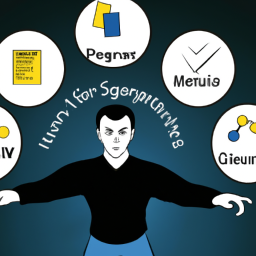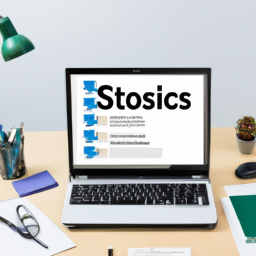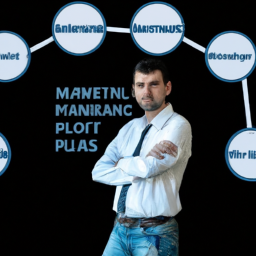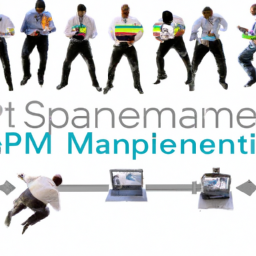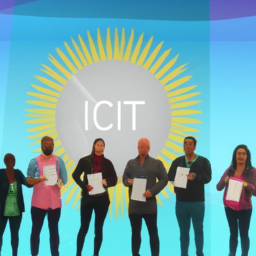Did you know that the Professional Scrum Master II (PSM II) exam covers not only the fundamentals of Scrum, but also a range of lesser-known topics?
With 10 possible exam topics, it’s crucial to be prepared for anything. From Agile Transformation to Lean Thinking, this article will give you the insights you need to excel in the PSM II exam.
So, let’s dive in and explore these lesser-known yet important areas of Scrum.
Key Takeaways
- Resistance to change and lack of understanding are major challenges in agile transformation
- Strategies to overcome these challenges include clear goals, collaboration, and ongoing support
- Scaling Scrum requires considering team dynamics and communication
- Advanced Scrum events like Sprint Review and Retrospective are crucial for reflection and improvement
Agile Transformation
Agile transformation is a challenging process that requires strong leadership and effective communication. The journey to becoming an agile organization can be filled with obstacles and complexities.
One of the major challenges in agile transformation is resistance to change. Many employees may be hesitant to adopt new ways of working and may cling to traditional methods.
Another challenge is the lack of understanding and knowledge about agile principles and practices. It is crucial to provide proper training and education to ensure everyone understands the purpose and benefits of agile.
To overcome these challenges, organizations can implement various agile transformation strategies. These include establishing clear goals and objectives, fostering a culture of collaboration and continuous learning, and providing ongoing support and guidance to teams.
Scaling Scrum
When scaling Scrum, it’s important to consider the impact on team dynamics and communication. As your organization undergoes an agile transformation, you may find the need to scale Scrum to accommodate larger projects or multiple teams working together.
Scaling Scrum involves implementing frameworks like Scrum of Scrums or Large-Scale Scrum (LeSS) to coordinate the efforts of multiple teams. However, this can have significant implications for team dynamics and communication.
It’s crucial to ensure that teams maintain their autonomy and self-organization while also aligning their work towards a common goal. Effective communication becomes even more important, as teams need to coordinate their efforts, share information, and resolve dependencies.
Advanced Scrum Events
To enhance your Scrum practice, consider implementing advanced Scrum events such as the sprint review and retrospective to continuously improve your team’s performance. These events provide valuable opportunities for reflection and adjustment, allowing your team to adapt and deliver high-quality products more effectively.
Here are four ways advanced Scrum events can benefit your agile delivery framework:
-
Sprint Review: This event enables your team to showcase the work completed during the sprint to stakeholders and gather feedback. It promotes transparency and collaboration, ensuring that the product aligns with customer needs.
-
Retrospective: The retrospective is a crucial event where the team reflects on their performance and identifies areas for improvement. It encourages continuous learning and fosters a culture of self-reflection and accountability.
-
Product Backlog Refinement: This event involves refining and prioritizing the product backlog. It helps the team gain a better understanding of upcoming work, ensuring that the backlog is well-groomed and ready for future sprints.
-
Sprint Planning: Sprint planning is a collaborative event where the team determines what can be achieved in the upcoming sprint. It helps set clear goals and expectations, ensuring a focused and productive sprint.
Agile Requirements and Backlog Management
In order to effectively manage your Agile requirements and backlog, it is crucial to understand the key concepts of user story prioritization, agile product backlog, and backlog refinement techniques.
Prioritizing user stories allows you to focus on delivering the most valuable features to your customers first.
The agile product backlog serves as a central repository for all the product requirements, allowing you to continuously refine and update them throughout the project.
Backlog refinement techniques such as user story mapping and story splitting help you break down complex requirements into manageable chunks, ensuring that your backlog remains organized and prioritized.
User Story Prioritization
A key aspect of user story prioritization is understanding the value it brings to the product. When it comes to agile project management, prioritizing user stories is crucial for efficient development. Here are four reasons why user story prioritization is important:
-
Maximizing value: Prioritizing user stories allows the team to focus on delivering the most valuable features first, ensuring that the product provides the highest possible value to the end-users.
-
Managing dependencies: By prioritizing user stories, the team can identify and address any dependencies between different features or tasks. This helps in managing the workflow and avoiding bottlenecks.
-
Estimating project timelines: Prioritizing user stories helps in estimating project timelines more accurately. By understanding the value and effort required for each story, the team can plan and allocate resources effectively.
-
Adapting to changes: Prioritization allows the team to be flexible and adapt to changing requirements. By regularly reevaluating and reprioritizing user stories, the team can respond to new insights or market conditions.
Agile Product Backlog
Prioritizing user stories in the agile product backlog helps you and your team stay organized and focused on delivering the most valuable features first. Agile backlog grooming is a crucial practice in ensuring the success of your project. By regularly reviewing and refining your backlog, you can keep it up-to-date and aligned with your project goals. Backlog prioritization techniques play a vital role in this process. Here are three popular techniques you can use to prioritize your backlog:
| Technique | Description |
|---|---|
| MoSCoW | Prioritize stories as Must Have, Should Have, Could Have, or Won’t Have to guide development. |
| Weighted Shortest Job First (WSJF) | Assign a numerical value to each story based on its business value, time criticality, and risk, then prioritize based on the highest WSJF score. |
| Kano Model | Categorize stories as Basic Expectations, Performance, and Excitement, and prioritize accordingly based on their impact and customer satisfaction. |
Backlog Refinement Techniques
Backlog refinement techniques are essential for keeping your agile product backlog up-to-date and aligned with project goals. Here are four effective practices to help you groom your backlog:
-
Regularly review and prioritize: Take the time to review and prioritize backlog items based on their importance and value to the project. This ensures that the most valuable and relevant items are at the top of the backlog.
-
Break down large items: Large backlog items can be overwhelming and challenging to estimate. Break them down into smaller, more manageable tasks to improve clarity and increase accuracy in estimation.
-
Collaborate with the team: Involve your team in the refinement process to gather diverse perspectives and insights. This collaboration helps ensure that everyone is aligned and understands the goals and requirements of each backlog item.
-
Keep the backlog clean: Regularly remove outdated or irrelevant items from the backlog to maintain its cleanliness and prevent clutter. This helps in keeping the backlog focused and easier to manage.
Scrum in Distributed Teams
It’s important to understand the challenges of implementing Scrum in distributed teams. In a distributed Scrum environment, where team members are geographically dispersed, virtual collaboration becomes crucial.
Virtual collaboration refers to the use of technology and online tools to enable effective communication and collaboration among team members.
One of the biggest challenges in distributed Scrum is maintaining a high level of transparency and communication. Without face-to-face interactions, it can be difficult to ensure everyone is on the same page and working towards the same goals.
However, with the right tools and practices in place, it is possible to overcome these challenges. Regular video conferences, online project management tools, and clear communication channels can help foster collaboration and keep the team aligned.
Agile Product Ownership
As a product owner, your responsibilities are crucial to the success of the agile delivery framework.
You are responsible for defining and prioritizing the product backlog, ensuring that it aligns with the overall vision and goals.
Additionally, you play a key role in maximizing the value delivered by the development team through effective communication and collaboration.
Understanding the agile delivery frameworks and how they support your role as a product owner is essential in driving successful product development and delivery.
Product Owner Responsibilities
To be prepared for the PSM II exam, it is important to understand the responsibilities of a Product Owner. As a Product Owner, your main role is to collaborate with various stakeholders to ensure the successful delivery of a valuable product. There are four key responsibilities that you should be familiar with.
-
Product Vision: You need to define and communicate a clear vision for the product, aligning it with the organization’s goals and strategies.
-
Stakeholder Management: It is essential to identify and engage with stakeholders, such as customers, users, and internal teams, to understand their needs and gather feedback throughout the product development process.
-
Product Backlog Management: You are responsible for maintaining a prioritized and well-groomed product backlog, ensuring that it contains valuable and actionable items for the development team.
-
Continuous Collaboration: Effective collaboration with the development team, Scrum Master, and other stakeholders is crucial to ensure a shared understanding of requirements, progress, and potential changes.
Understanding these responsibilities will not only help you ace the PSM II exam but also excel in your role as a Product Owner.
Now, let’s dive into the next topic: agile delivery frameworks.
Agile Delivery Frameworks
Now that you understand your responsibilities as a Product Owner, let’s explore the world of agile delivery frameworks.
In today’s fast-paced business environment, organizations are increasingly adopting agile methodologies to stay ahead of the competition. Agile delivery frameworks provide a structured approach to managing projects and delivering value to customers in an iterative and incremental manner.
Agile transformation is the process of implementing agile practices and principles across an organization. It involves a shift in mindset, culture, and processes to enable teams to deliver high-quality products faster and more efficiently.
Some popular agile delivery frameworks include Scrum, Kanban, and Lean. These frameworks provide teams with guidelines and tools to collaborate, prioritize work, and continuously improve.
By adopting agile delivery frameworks, organizations can respond quickly to changing customer needs, reduce time to market, and increase customer satisfaction.
Organizational Change and Culture
The key to understanding Organizational Change and Culture lies in recognizing the impact of cultural norms within a company. When it comes to organizational change management, cultural transformation plays a crucial role in the success of any initiative. Here are four key points to consider:
-
Cultural norms influence behavior: The way people think, communicate, and interact is shaped by the culture of the organization. Understanding these norms is essential for driving change effectively.
-
Resistance to change is normal: Cultural norms often create resistance to change. Recognizing this resistance and addressing it head-on is crucial to navigate the challenges that come with any transformation.
-
Leadership sets the tone: Leaders play a vital role in shaping and influencing the culture of an organization. Their actions and behaviors can either support or hinder the desired change.
-
Communication is key: Effective communication is essential in managing organizational change. Clear, consistent, and transparent communication helps align employees and foster a culture of openness and collaboration.
Lean Thinking and Agile Principles
In this discussion, you will explore the value of Lean Thinking and how it aligns with Agile principles.
Lean Thinking emphasizes the elimination of waste and the creation of value for the customer, which is crucial in Agile development.
Additionally, you will delve into the concept of continuous improvement in Agile, understanding how it promotes adaptability, efficiency, and overall project success.
Value of Lean Thinking
You’ll be surprised by the value that Lean Thinking can bring to your exam preparation for PSM II. Adopting a lean mindset in project management can have numerous benefits, including waste reduction and improved efficiency. Here are four reasons why Lean Thinking is worth incorporating into your study routine:
-
Increased focus: By eliminating unnecessary tasks and distractions, you can concentrate on the essential topics and concepts required for the exam.
-
Improved time management: Lean Thinking encourages you to identify and eliminate time-wasting activities, allowing you to allocate your study time more effectively.
-
Enhanced problem-solving skills: The lean mindset promotes a systematic approach to problem-solving, which can help you tackle complex exam questions with ease.
-
Streamlined processes: Applying Lean Thinking principles to your study plan can help you streamline your study materials, notes, and resources, making revision more efficient.
Incorporating Lean Thinking into your exam preparation can not only improve your chances of success but also equip you with valuable skills for your future project management endeavors.
Continuous Improvement in Agile
Continuous improvement is a key aspect of Agile methodologies. In order to measure progress and identify areas for improvement, Agile teams rely on agile metrics. These metrics provide valuable insights into the team’s performance and help drive continuous improvement.
By tracking metrics such as velocity, cycle time, and defect rate, teams can identify bottlenecks and make data-driven decisions to enhance their processes.
Additionally, Agile teams often adopt kaizen practices, which are rooted in the philosophy of continuous improvement. Kaizen encourages small, incremental changes that lead to significant improvements over time. This approach empowers teams to constantly evaluate and optimize their work, fostering a culture of continuous learning and growth.
Agile metrics and kaizen practices work hand in hand to drive continuous improvement in Agile methodologies.
Continuous Improvement and Retrospectives
One way to enhance team performance is through regular retrospectives to identify areas for continuous improvement.
Here are some strategies to maximize the effectiveness of retrospectives:
-
Set clear goals: Clearly define the purpose and desired outcomes of the retrospective to focus the team’s efforts on improvement.
-
Foster a safe and open environment: Create a non-judgmental space where team members feel comfortable sharing their ideas, concerns, and suggestions.
-
Use structured techniques: Employ various retrospective techniques such as the Start, Stop, Continue method or the Five Whys to facilitate meaningful discussions and uncover root causes.
-
Take action: Ensure that action items and improvement plans are created and followed up on to drive actual change and progress.
By implementing these continuous improvement strategies, you can harness the full potential of retrospectives to drive team growth and success.
This sets the stage for effective agile coaching and facilitation, where you can further support your team in their journey towards continuous improvement and high-performance.
Agile Coaching and Facilitation
To effectively coach and facilitate an agile team, you should create a collaborative environment where team members feel empowered to share their ideas and work together towards achieving their goals. Agile coaching techniques can help you in this process.
As a coach, you can use techniques such as active listening, asking powerful questions, and providing constructive feedback to support the team’s growth and development. By facilitating team collaboration, you encourage open communication and foster a sense of trust among team members. This can be done through practices like daily stand-up meetings, sprint planning sessions, and retrospectives.
Frequently Asked Questions
What Are the Key Steps Involved in an Agile Transformation Process?
To successfully undergo an agile transformation process, you need to follow several key steps.
First, establish a clear vision and communicate it effectively to all stakeholders.
Next, create a strategy and roadmap that outlines the necessary changes.
Then, focus on building a culture of collaboration, transparency, and continuous improvement.
Encourage teams to embrace agile practices and provide them with the necessary training and support.
How Can Scrum Be Scaled Effectively in Large Organizations?
Scaling scrum effectively in large organizations can be challenging. However, with the right agile framework implementation, you can overcome these challenges.
Scaling requires careful planning, strong leadership, and clear communication. By ensuring that teams are aligned, dependencies are managed, and collaboration is encouraged, you can achieve success in scaling scrum.
What Are Some Advanced Scrum Events Beyond the Daily Stand-Up, Sprint Planning, and Sprint Review?
When it comes to advanced Scrum events, there are a couple of techniques that go beyond the daily stand-up, sprint planning, and sprint review.
One such technique is the advanced retrospective, which allows the team to reflect and improve their processes in a more in-depth manner.
Another event that can be used in larger organizations is the Scrum of Scrums, where representatives from different Scrum teams come together to coordinate and address any cross-team dependencies.
These events can be powerful tools in scaling Scrum effectively.
How Are Agile Requirements and Backlog Management Different From Traditional Project Management Approaches?
To understand how Agile requirements and backlog management differ from traditional project management, consider this:
Agile requirements focus on adaptability and collaboration, whereas traditional project management often relies on detailed upfront planning and documentation.
Agile teams prioritize customer satisfaction by continuously gathering and incorporating feedback, while traditional project management follows a more linear approach.
What Are Some Effective Strategies for Managing a Scrum Team That Is Geographically Distributed?
To effectively manage a geographically distributed Scrum team, you need to focus on remote collaboration and virtual team management. This means leveraging communication tools like video conferencing, instant messaging, and project management software.
Regularly scheduled virtual meetings and clear communication channels are key. Additionally, encourage team members to build relationships and foster trust through team-building activities.
Emphasize the importance of transparency and frequent updates to ensure everyone is aligned and working towards the same goals.
Conclusion
In conclusion, while preparing for the PSM II exam, it’s crucial to familiarize yourself with these lesser-known topics.
Although the exam may seem challenging, remember that with dedication and practice, you can overcome any obstacle.
Some may argue that these topics are not as important as the well-known ones, but understanding them will make you a well-rounded and competent Scrum Master.
So, embrace the opportunity to expand your knowledge and skills, and let your passion for Agile shine through in your exam performance.


